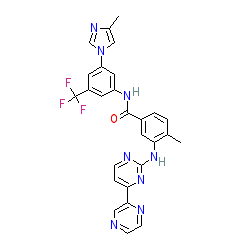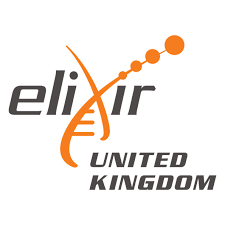GtoPdb is requesting financial support from commercial users. Please see our sustainability page for more information.
|
Synonyms: IY-5511 | IY5511 | IY5511HCl | KB-146009 | Supect®
radotinib is an approved drug (South Korea (2012))
Compound class:
Synthetic organic
Comment: This drug is approved only in South Korea, for the treatment of chronic myeloid leukemia (CML), where its trade name is Supect.
It is Example 5 in patent US7501424 [1]. The marketed formulation contains the hydrochloride salt.. 
View more information in the IUPHAR Pharmacology Education Project: radotinib |
|
|||||||||||||||||||||||||||||||||||
| Bioactivity Comments |
| The in vitro growth-inhibitory activity of this compound was determined against several cancer cell lines. Example IC50 values were 0.006 μg/ml in K562 cells, 0.063 μg/ml in HT-1197 cells and 0.06 μg/ml in CT-26 cells [1]. We have been unable to find publicly available affinity data for this compound at its proposed molecular target(s). |







